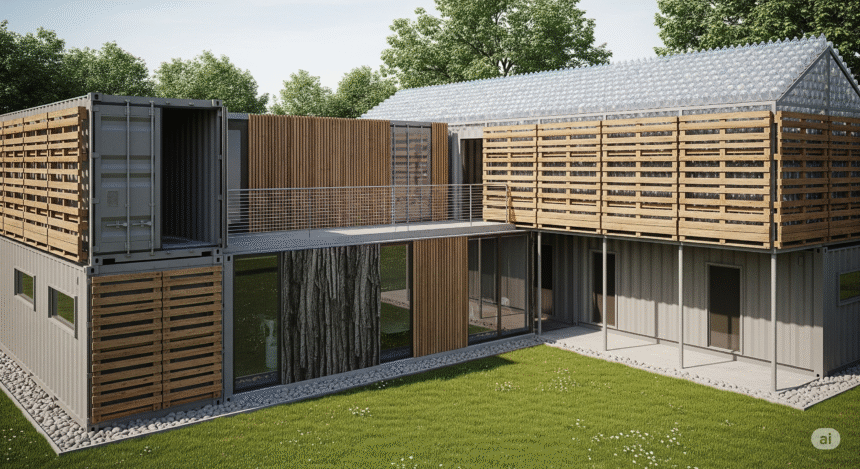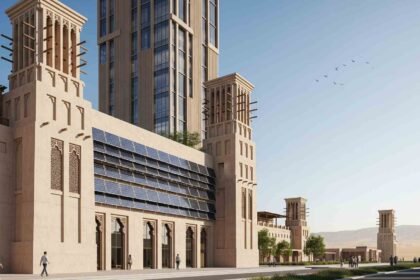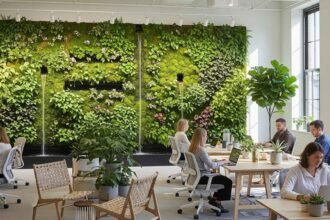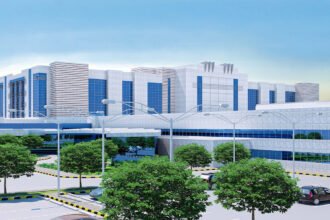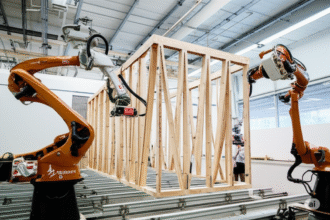Let’s face it, construction hasn’t always been kind to the planet. But that’s starting to change. In 2025, builders and architects are moving away from the old ways and turning toward greener, smarter materials. And right at the heart of this shift is the use of alternative and recycled building materials.
From concrete that used to be part of a sidewalk to bricks made from mushrooms. The industry is finding creative ways to cut waste, save money, and still build strong.
So, why the change?
For decades, construction relied on materials like cement, steel, and fired bricks. They’re tough, sure, but they’re also energy-hungry and bad for the environment. Cement alone contributes nearly 8% of all global CO₂ emissions. Add to that the mountain of construction waste we toss into landfills every year, and it’s clear something needs to change.
Now, as climate goals get stricter and sustainability becomes more than just a buzzword, builders are being pushed to do things differently. And honestly, it’s working.
Giving Old Materials New Life
One of the smartest things the industry is doing? Reusing what we already have.
Recycled concrete, for example, is being crushed and reused in foundations and roads. It’s not fancy, but it works, and it saves tons of waste from landfills.
Steel is another hero. It’s strong, endlessly recyclable, and just as good the second (or third) time around. Most modern buildings already include some recycled steel, and now even more projects are joining in.
Even glass and plastic are getting a second life. Old bottles and windows are being turned into decorative tiles, while plastic waste is being compressed into building blocks that are surprisingly durable and weatherproof.
There’s also wood from old buildings, which many people prefer because it’s already seasoned, full of character, and usually stronger than freshly cut timber. Instead of chopping more trees, why not reuse what’s already been built.
The Rise of the Unusual (But Brilliant)
Now here’s where things get really interesting: alternative materials that weren’t even considered viable a few years ago are now entering the mainstream.
Take hempcrete, for example. It’s a mix of hemp fibres and lime, and while it might not replace concrete just yet, it’s perfect for insulation and walls. It’s breathable, mould-resistant, and even absorbs carbon from the air as it hardens.
Or mycelium bricks, made from the root structure of fungi. Grown in moulds, dried, and shaped into building blocks, these are light, biodegradable, and naturally insulating.
There are also fly ash bricks, which turn waste from coal plants into strong, lightweight bricks. They require less energy to produce and are more thermally efficient than traditional clay bricks.
Bamboo deserves a mention too. In parts of Asia and Africa, bamboo has always been used for scaffolding and housing, but now, it’s being engineered into panels and flooring used in modern homes. It grows super fast, is flexible, and has the strength of steel.
And then there’s Ferrock, a material made from industrial waste like steel dust. Not only is it harder than concrete, but it also traps CO₂ during curing.
What’s in it for builders?
It’s not just about saving the planet. These materials come with real-world benefits:
- Lower costs – Many recycled materials are cheaper and easier to source locally.
- Faster building – Pre-fab materials like hemp panels or plastic bricks can speed up construction.
- Better indoor air – Natural materials mean fewer chemicals and VOCs in the air.
- Creative freedom – Architects love these materials because they allow fresh, modern designs.
The Hurdles We Still Face
Of course, it’s not all smooth sailing. Some builders are still sceptical, and a few alternative materials struggle to meet strict building codes or safety regulations. There’s also the challenge of scaling up production and making sure quality stays consistent.
But with more governments offering green incentives and buyers demanding eco-friendly homes, those barriers are slowly coming down.
Where We’re Headed
The future of construction isn’t just about building stronger or faster, it’s about building smarter. The materials we once saw as waste are now the foundation of the next generation of homes, offices, and public spaces.
We’re not just stacking bricks anymore. We’re rethinking what a building can be, what it’s made from, and how it impacts the world around us.
The shift toward recycled and alternative materials is more than a trend; it’s a turning point. And in 2025, it’s already shaping skylines and neighborhoods all around the world.


